Posts Tagged: Eristalis tenax
Day 6 of National Pollinator Week: Meet the Drone Fly
It's Day 6 of National Pollinator Week. Meet the drone fly (Eristalis tenax), often mistaken for a honey bee. The late Robbin Thorp, UC...
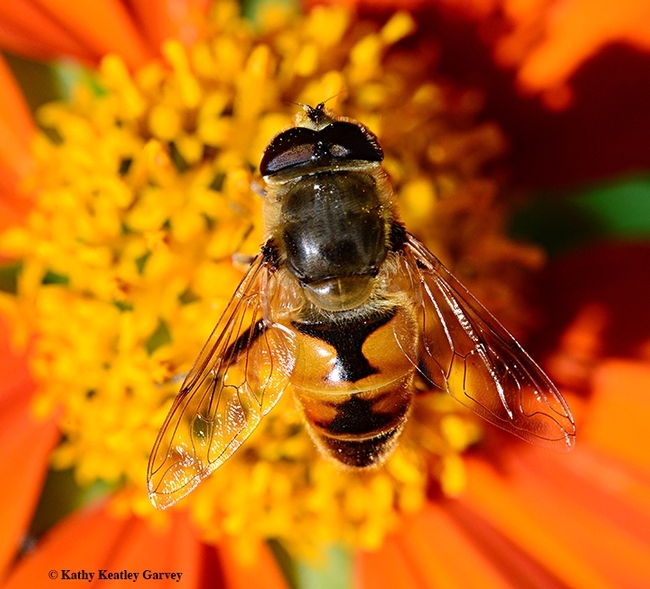
This drone fly (Eristalis tenax) is often mistaken for a honey bee. (Photo by Kathy Keatley Garvey)
A Case of Mistaken Identity
They can't drain your bank account. They can't open up new credit cards. They can't get medical treatment on your health insurance. But they are...
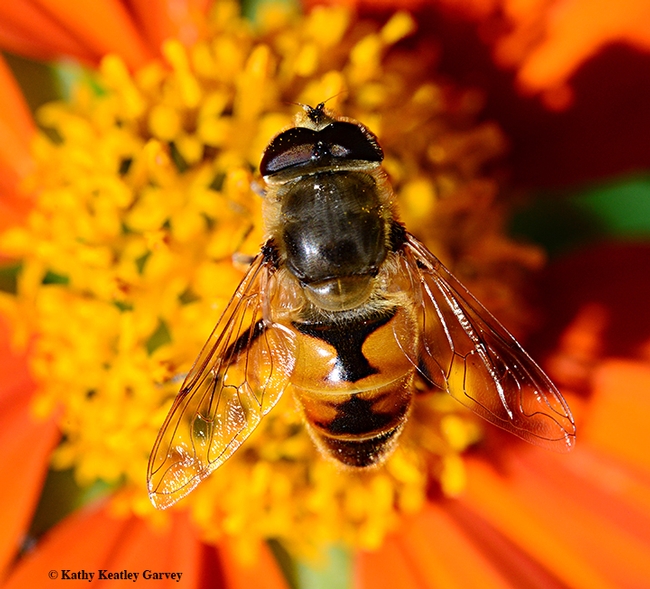
Meet the drone fly (Eristalis tenax), often mistaken for a honey bee. Note the one set of wings, large eyes, stubby antennae and a distinguishing "H" on its abdomen. (Photo by Kathy Keatley Garvey)
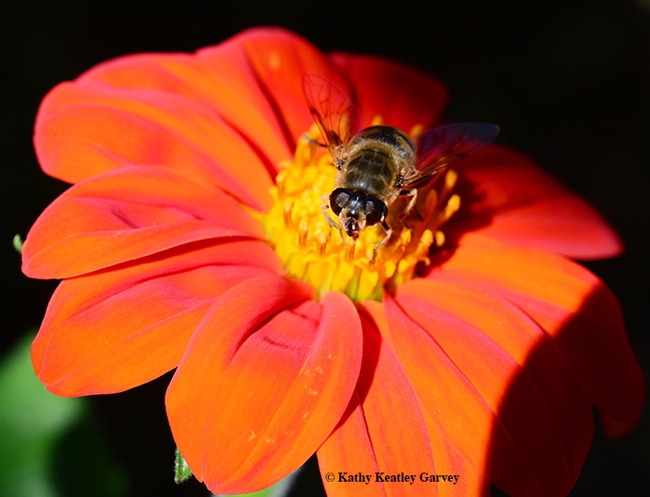
Drone fly nectaring on Mexican sunflower, Tithonia. (Photo by Kathy Keatley Garvey)
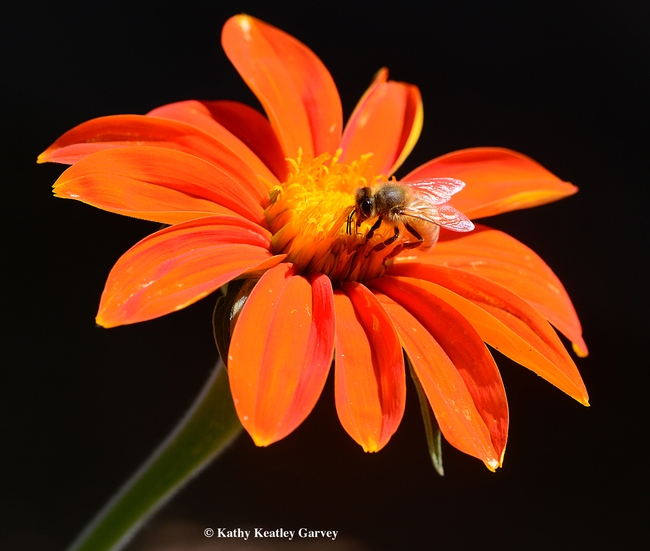
A honey bee sipping nectar from a Mexican sunflower (Tithonia). (Photo by kathy Keatley Garvey)
Pollinators on the Beach? Fancy Meeting You Here
So you're walking along Doran Regional Park Beach in Sonoma County on Tuesday, Oct. 16 and thinking about the pollinators in your back yard....
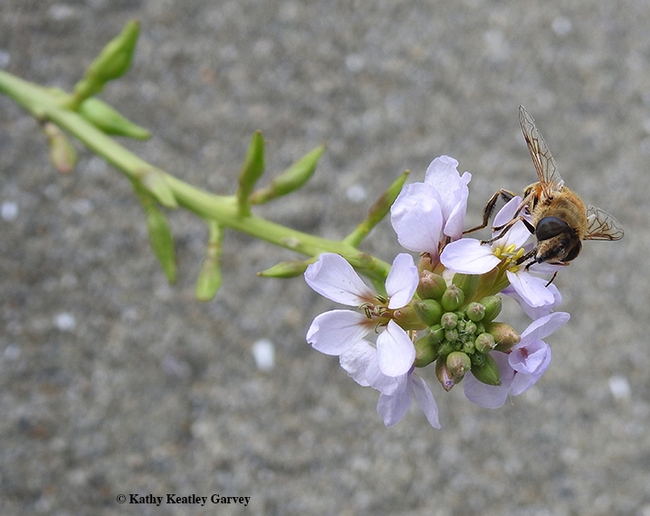
A syrphid or hover fly, Eristalis tenax, nectaring on a sea rocket plant, Cakile maritima, on Oct. 18 at Doran Regional Park Beach, Sonoma. (Photo by Kathy Keatley Garvey)
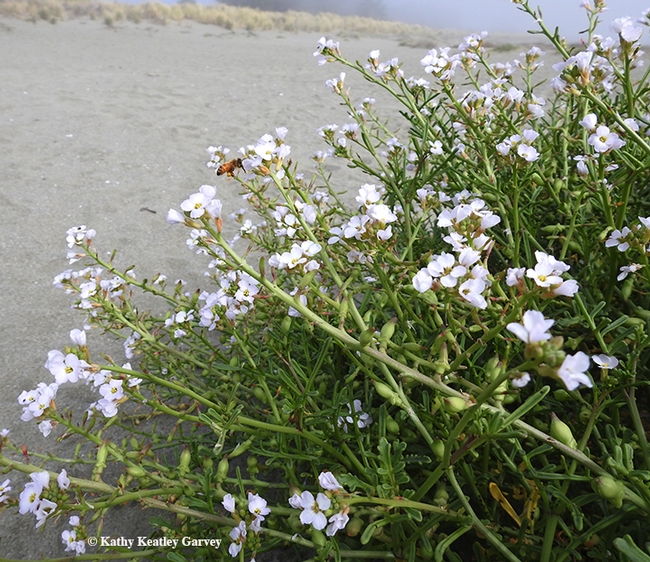
Along with sand castles and beach balls and beach umbrellas, look for pollinators nectaring on sea rocket plants at the beach. Note the honey bee. (Photo by Kathy Keatley Garvey)
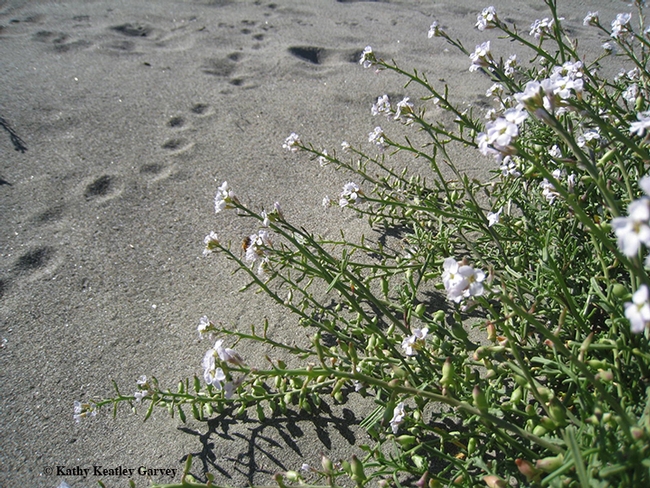
Footprints in the sand? Yes, and bees and other pollinators nectaring on sea rocket. (Photo by Kathy Keatley Garvey)
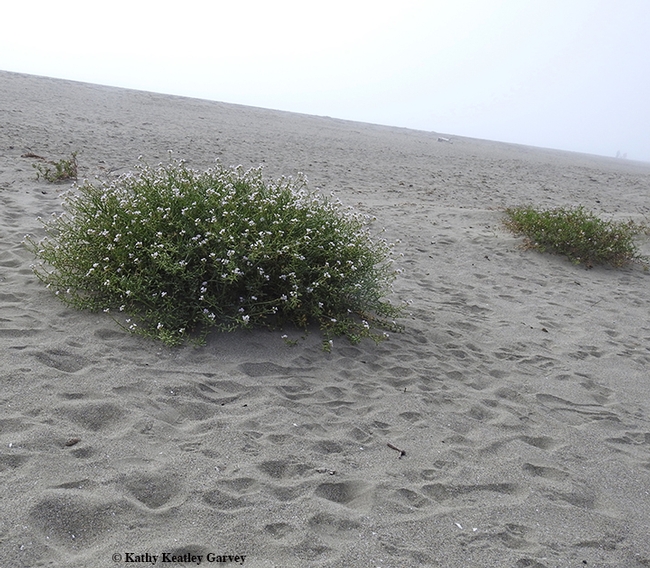
European sea rocket grows in clumps or mounds on sandy beaches along the coastlines of North Africa, western Asia, and North America. (Photo by Kathy Keatley Garvey)
Musical Flowers: Jockeying for Position
You've heard of "musical chairs," that anxiety-driven elimination game involving chairs, music and players. When the music stops and a chair is...
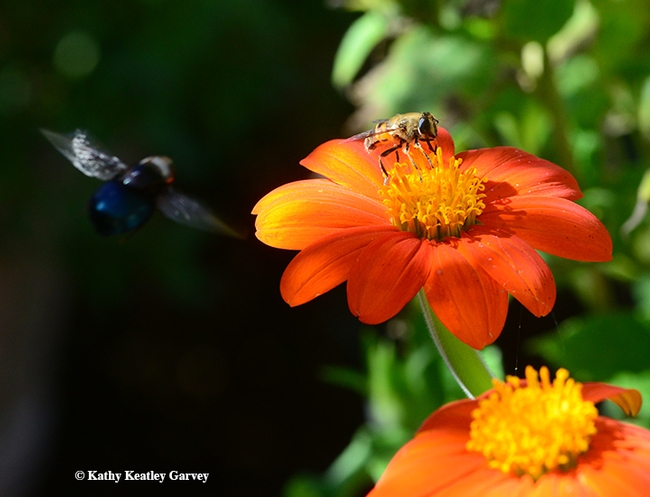
A black syrphid fly aims for the same Mexican sunflower, occupied by another syprhid fly. (Photo by Kathy Keatley Garvey)
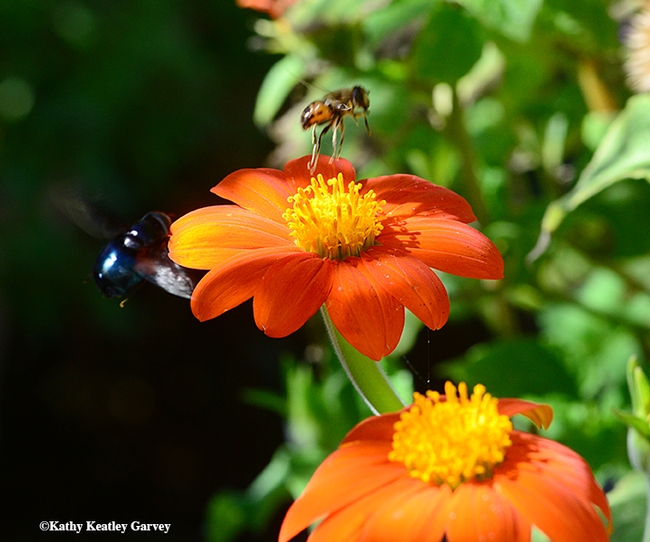
I'm outta here! The hover fly (probably Eristalis tenax) lifts off. (Photo by Kathy Keatley Garvey)
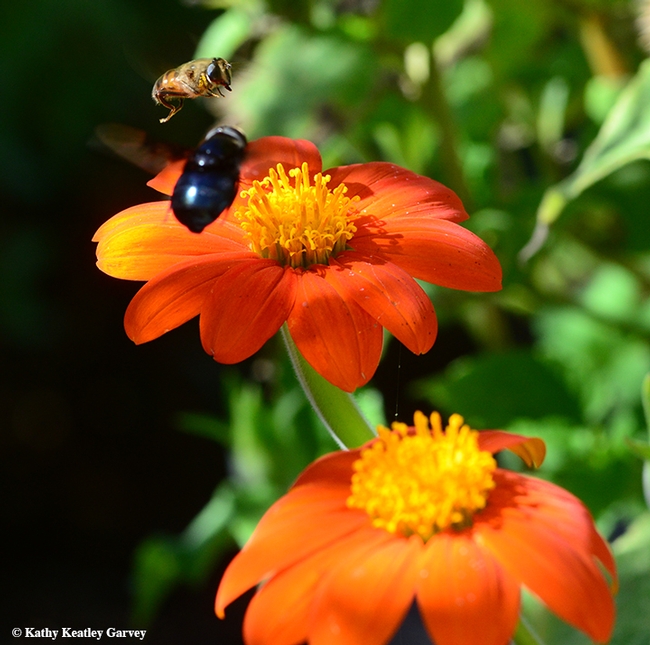
Not giving up and still jockeying for position, the two hover flies try to claim the same flower. (Photo by Kathy Keatley Garvey)
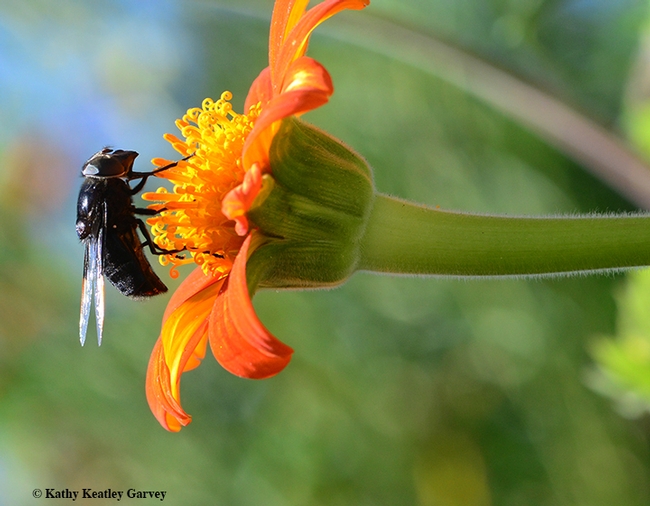
Ah, all mine. A black hover fly or Mexican cactus fly claims a Tithonia blossom. (Photo by Kathy Keatley Garvey)
Do You Know Me?
The drone fly is an identity thief. It's often mistaken for a honey bee. Hey, isn't every floral visitor a bee? No, not by a long shot. One's a fly...
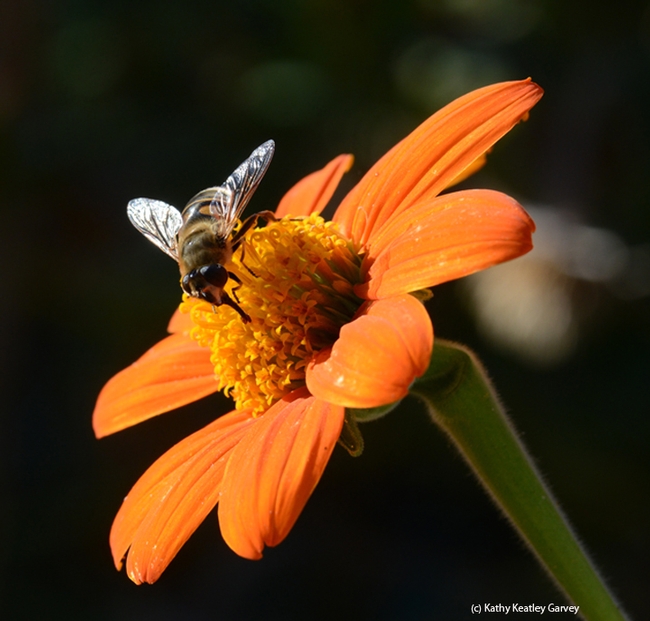
A drone fly, Eristalis tenax, sips nectar from a Mexican sunflower, Tithonia. (Photo by Kathy Keatley Garvey)

Side view of a drone fly. The fly is often mistaken for a honey bee. (Photo by Kathy Keatley Garvey)

Over and out--this drone fly says it's time to go. (Photo by Kathy Keatley Garvey)
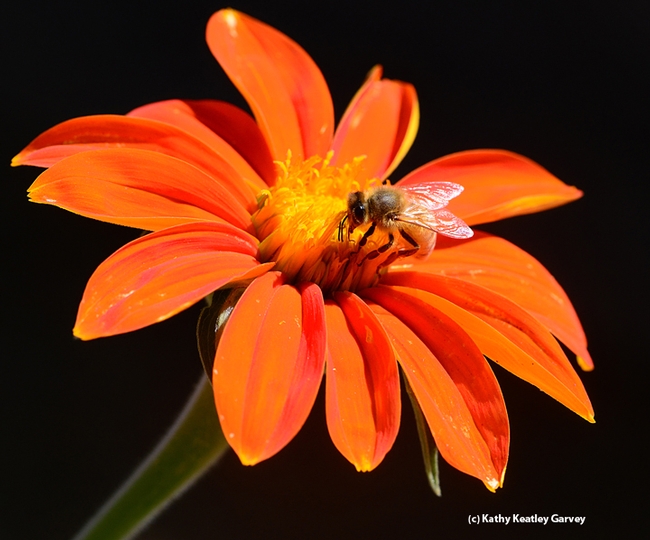
A honey bee sipping nectar from a Tithonia. (Photo by Kathy Keatley Garvey)

